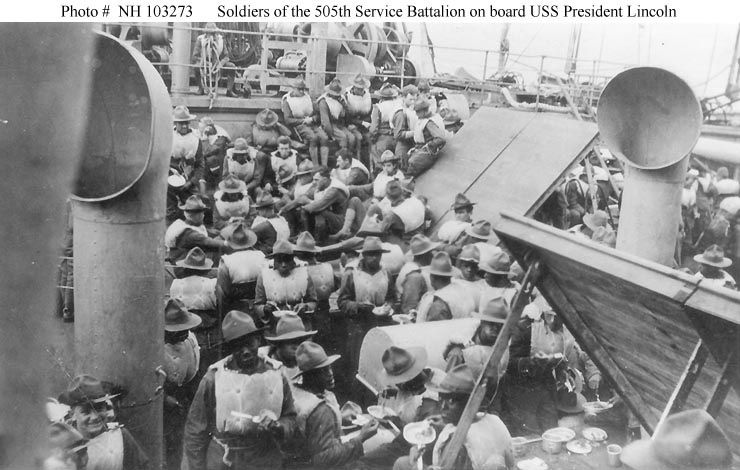Thanksgiving Day - 1918 - must have been a day of great rejoicing for millions of Americans.
World War One, known then as ?The Great War? was over, officially ending on November 11, 1918. Many soldiers made it back home in time for Thanksgiving.
Yesterday, I saw the movie ?The Red Dawn? (2012 version). The best line in the movie was this: ?We inherited our freedom. Now it?s time for us to fight for it.?
The soldiers who served in The Great War fought for our freedom. And the price they paid was horrendous. It?s considered by some historians to be the bloodiest war in our nation?s history. Death tolls were staggering.
In a single battle, ?The Battle of the Somme,? more than 1.2 million soldiers died. One battle: 1,200,000 dead. Can you imagine picking up the morning paper and seeing the headline, ?1.2 million dead in fierce fighting overseas??
Britain?s Prime Minister Lloyd George described The Battle of the Somme as, ?The most gigantic, tenacious, grim, futile and bloody fight ever waged in the history of war.?
When the war ended, more than eight million soldiers were dead and 20 million were wounded.
Only four percent of the war deaths were attributed to poison gas, but the suffering inflicted by chemical warfare was unspeakable. Perhaps the most famous description of these horrors was spoken by Vera Brittain, a volunteer nurse who sat at the bedside of the sick and dying soldiers.
She wrote, ?I wish those people who write so glibly about this being a holy War, and the orators who talk so much about going on no matter how long the War lasts and what it may mean, could see a case?to say nothing of 10 cases?of mustard gas in its early stages?could see the poor things burnt and blistered all over with great mustard-coloured suppurating blisters?always fighting for breath?saying that their throats are closing?? (from her book, Testament of Youth).
The term ?basket case? came from The Great War. Due to the increased proficiency of bomb-making, soldiers sometimes became quadruple amputees. These poor souls were carried off the battlefield in a wicker basket, and their mental state was often worse than their physical state. Ever since learning that fact, I?ve never again used the term ?basket case.?
And yet the #1 cause of death was the Spanish Influenza. More than half of the American soldiers who died in The Great War died of influenza.
President Wilson promised us that it was ?The War to End All Wars.? He was wrong.
General ?Black Jack? Pershing was the commander of the American Expeditionary Force. Neither he, nor Ferdinand Foch of France (Allied Supreme Commander) were satisfied with the armistice agreement, which allowed Germany to just lay down their weapons.
Foch said this?about the?treaty: ??This isn?t peace; it is a cease-fire for 20 years.?
He was right. Twenty years later, Germany rose again and waged war against France and England.
But on Thanksgiving Day in 1918, it must have seemed like happy days had returned to the world. American dough-boys returned to their families and it was a chance for a fresh start. Due to all resources having been devoted to the war effort, housing analysts estimated that 1-2 million new housing units were needed immediately for returning soldiers.
And Sears Roebuck had just the house for them. It was after World War One that sales of kit homes skyrocketed.
And it was one year before World War Two that Sears closed their Modern Homes department once and for all.
To read more about Sears Homes, click here.
*

Last year, I was systematically reading through "The Daily Press" (Newport News, VA) when I happened upon this editorial drawing. It was dated November 29, 1918. The picture above is rife with meaning. Father welcomes home two of his three sons, while Mother thinks about the boy who will not be coming home. In the window, a shaded figure is marching heavenward, perhaps pausing at the old home-place to see his earthly family one more time. On the wall, a banner is displayed with three stars, presumably two are blue (for the two boys that have just returned home) and a gold star for the young man who died in the war. The table is piled high with post-war treats, such as sugar (in short supply during the war) and milk (also hard to find in the urban areas) and bread (flour was in very short supply). The war is over and the hard times are now in the past. It's a powerful image, and one that was an accurate representation of life in that first post-war Thanksgiving. The title overhead reads, "Glory, glory, hallelujah."
*

A close-up of Mother as she gazes longingly out the window. Perhaps she was striving to be grateful for the two boys that returned home. Pre-Sullivan, it was not unusual for all the sons in the family to go off to war. The five Sullivan brothers served on the USS Juneau during World War II and all five boys died when the ship was torpedoed by a Japanese sub.
*

It was this type of overcrowding that enabled the Spanish Influenza to spread so fast among the soldiers. It's estimated that - worldwide - about 50 million died from this highly contagious flu. The USS Lincoln was a passenger ship that was seized by the United States Government and turned into a Navy transport during World War One.
*
To learn more about housing in early 20th Century America, click here.
*?? *?? *
Source: http://www.searshomes.org/index.php/2012/11/22/one-very-very-happy-thanksgiving-92-years-ago/
wisconsin primary dallas fort worth airport texas tornados seattle seahawks new uniforms wisconsin recall wisconsin recall doris day
No comments:
Post a Comment
Note: Only a member of this blog may post a comment.